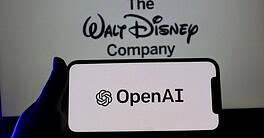Alternative finance—in all its myriad forms—could prove the answer to the global trade finance gap.

Table Of Contents
Trade finance plays an important role in supporting global trade: As well as providing funding, it also enables importers and exporters to mitigate risk in their transactions. However, in some parts of the world, demand significantly outstrips availability for such funding. As a result, more companies are turning to alternative financiers to meet their trade finance needs.
In a speech in March 2015, the World Trade Organization’s director-general, Roberto Azevêdo, discussed unmet demand for trade finance, referring to a document published by the WTO in February. “I was particularly struck by the fact that the financing gaps are the highest in the poorest countries, notably in Africa and Asia,” he said. “And I was struck by the size of those gaps.”
A study carried out by Asian Development Bank (ADB) in 2014 identified a global trade finance gap of $1.9 trillion, including $1.1 trillion in developing Asia. The survey also found a sizable gap of $60 billion in Africa. Other estimates suggest this figure could be even greater. “According to a recent African Development Bank report on trade finance in Africa, the conservative estimate for the value of unmet demand for bank-intermediated trade finance was between $110 billion and $120 billion,” says Vinod Madhavan, head of transactional products and services, South Africa, at Standard Bank.
Traditional trade finance may be hard to come by in emerging markets, but some companies are realizing that other sources of funding may be worthy of consideration. “When companies are unable to get their capital needs met by traditional sources, they have to explore other financing options—be it from funds, private equity firms, sovereign fund—to going public,” says Francois Dotta, managing partner and head of merchant finance at specialty finance house EFA Group.
From the point of view of alternative financiers, unmet demand for trade finance presents an opportunity. Dotta says that EFA Group is financing an increasing number of companies in Asia and the Middle East, mainly from the middle-market segment. The firm’s financing turnover doubled to almost $2 billion in 2014 and is on track to reach $3 billion this year.
Declan O’Brien, CEO of Barak Fund Management, adds that the market for alternative trade financiers in Africa is developing fast. “As the large global banks de-risk and pull back from their Africa presence, the opportunities for alternative trade financiers are growing,” he says.
Meanwhile, Steven Beck, head of trade finance at ADB, says the bank is making efforts to bring more institutional investors into trade finance. “Hedge funds and pension funds have experimented with buying trade finance portfolios from banks, and these have been a success,” he comments. Beck says that other entrants include online platforms (such as crowdfunding sites)—which may be filling some of the gap, although little information is available on the overall impact. “We need to watch and possibly support these kinds of new e-based entrants,” he adds.
NEW MODELS

Technology is supporting the arrival of financing models that may not have been possible in the past. Chinese firm Alibaba, for example, has recently launched a trade finance service enabling UK companies to apply for lines of credit when purchasing goods from China-based suppliers. The service is being provided in collaboration with lenders ezbob and iwoca. “The partnership with Alibaba.com highlights the dramatic growth in alternative forms of lending and the economic shift away from established bank lenders,” said Christoph Rieche, iwoca’s CEO, in a press release. “We expect to finance over £100 million ($159 million) worth of deals over the next 12 months.”
Many of these services are aimed specifically at small and medium-size enterprises. In Africa peer-to-peer lending platform RainFin has announced it is diversifying in order to support SMEs—particularly those that have been rejected by banks. In the UAE, similarly, a number of alternative lenders have recently stepped into the market, such as a shariah-compliant supply-chain finance solution launched in January by Tawreeq and an invoice-financing service developed by peer-to-peer platform Beehive.
Necessity is the mother of invention, and the trade finance gap is clearly opening up opportunities for alternative financiers and new models to gain traction. That said, alternative financiers aren’t going to solve these issues overnight, and the barriers to entry can be high in these markets. “There is a need for commitment in this business,” says Dotta. “You cannot go in and out of trade finance. It is a resource-intensive strategy that requires specialized skill sets. It is relationship-driven, where you need to build your network well.”
Nevertheless, while alternative financiers may not be in a position to fill the funding gap in its entirety, they can certainly play a role in filling it by working alongside banks to finance trades that they are unable to take on. As Dotta points out, “Alternative financing still represents a tiny pool in the lending market, but it is definitely growing.”



